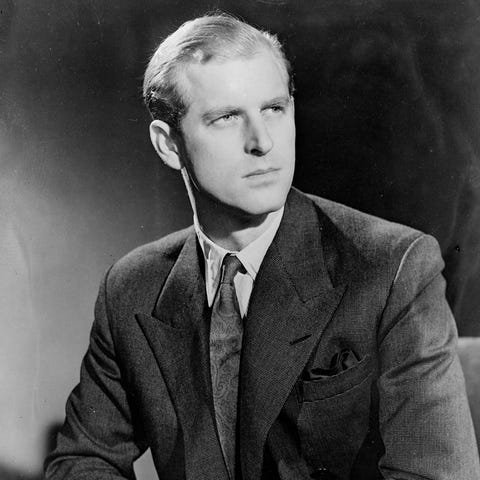begin quote from:
At 98, Prince Philip Is the Last of the Old-School Royals
The Duke of Edinburgh represents a royal world—and a Britain—that has largely disappeared.
Prince Philip celebrates his 98th birthday today. At nearly a century, the Duke of Edinburgh is the proud, doughty patriarch of a Royal Firm eminently well-prepared for the modern era. And while he has been praised at times for his efforts to modernize the institution into which he married, Philip represents a royal modus operandi the likes of which we’ll never see again. His was an epoch of Empire and old Britain that is, definitively, no more.
On a personal level, there’s an old-fashionedness to Philip; a man’s man, stiff upper lip always intact with all the foibles afforded to men in the British aristocracy; though ironically in a marriage where he had no choice but to take second place to his wife, the Queen. The world Philip has inhabited for more than 70 years has already largely drifted away—and with it, most of the power that the House of Windsor once wielded. But the comfort is that he is somehow still here.
He was born Prince Philip of Greece and Denmark in 1921 and fled his homeland as a baby in a wooden fruit box. Being part of a royal dynasty was still a dangerous business back then—just look at what happened to the Romanovs in 1918. But despite a rackety childhood living in exile—first in France, then England, Germany, and at boarding school in Scotland—the Duke of Edinburgh’s blood ran true blue. When he married into the British royal family, he was upholding an elitist tradition of unions between European royals—no commoners allowed. Indeed, the Queen and Prince Philip are third cousins, both directly related to Queen Victoria. How times have changed—none of Philip's children married fellow royals and none of his grandchildren married aristocrats.
The British Empire was still a thing when this brilliant naval commander became consort to the most powerful monarch in the world. Yet Her Majesty and the Duke of Edinburgh have watched that empire fade away, as independence was inevitably claimed by India, various African nations, and finally Hong Kong.
In its wake, the formation of the Commonwealth of Nations in 1949 felt like a desperate throwback to halcyon days and it will be interesting to see if the union remains in decades to come. Membership is voluntary and yes, numbers have swelled to 53 nations, but today’s Commonwealth has the gentle hum of a networking body sharing insights, rather than the chest-beating and oppressive roar of the colonial empire.
It is in this environment I suspect that Philip developed the casual racism that came out in some of his notable gaffes. Such utterances, very much of their time, would rightfully cause widespread condemnation if his children or grandchildren were to follow suit today, as I suspect would Philip’s strict parenting code—sending a shy, artistic Prince Charles off to rough Gordonstoun to toughen him up.
The abiding image of Philip, hands clasped behind his back standing behind the Queen, also feels of its time. The public displays of affection the Duke and Duchess of Sussex have made their trademark are nowhere in Harry’s grandfather’s make-up, nor can one imagine him taking part in the open discussion of private battles that Princes William and Harry have made public in their work to fight the stigma of mental illness.
Philip is also the last of the royals to have a certain freedom despite the strictures of his gilded cage as the monarch’s consort. Rumors of romantic extra-marital affairs have swirled, but the press has largely kept quiet, a “kindness” not afforded to Philip’s children. An enthusiastic pilot, he frequently flew himself around the world and only stopped flying in 1997. He also headed off solo on sea voyages and loved to sneak off for a beer with his mates, even when he was on overseas tours. Today’s young royals have a much more difficult time shaking off the press to spend time privately.
Philip's children and grandchildren, in turn, have developed a taste for a much more glamorous existence than the one to which he and the Queen gravitated. Caribbean breaks, African safaris, and skiing holidays were never the chosen holidays for the Duke of Edinburgh and Elizabeth, who preferred bracing al fresco barbecues on remote hillsides in the Balmoral estate, with Philip turning the sausages and Her Majesty washing the plates.
Perhaps Philip's most notable quality is his steely work ethic. He has worked tirelessly for his monarchy, retiring at 96 when the Palace calculated he had completed 22,219 solo engagements since 1952 and thousands more with the Queen. The young royals whose workload is considerably more lenient, I suspect, are unlikely to follow suit.
The end of an era indeed.













No comments:
Post a Comment